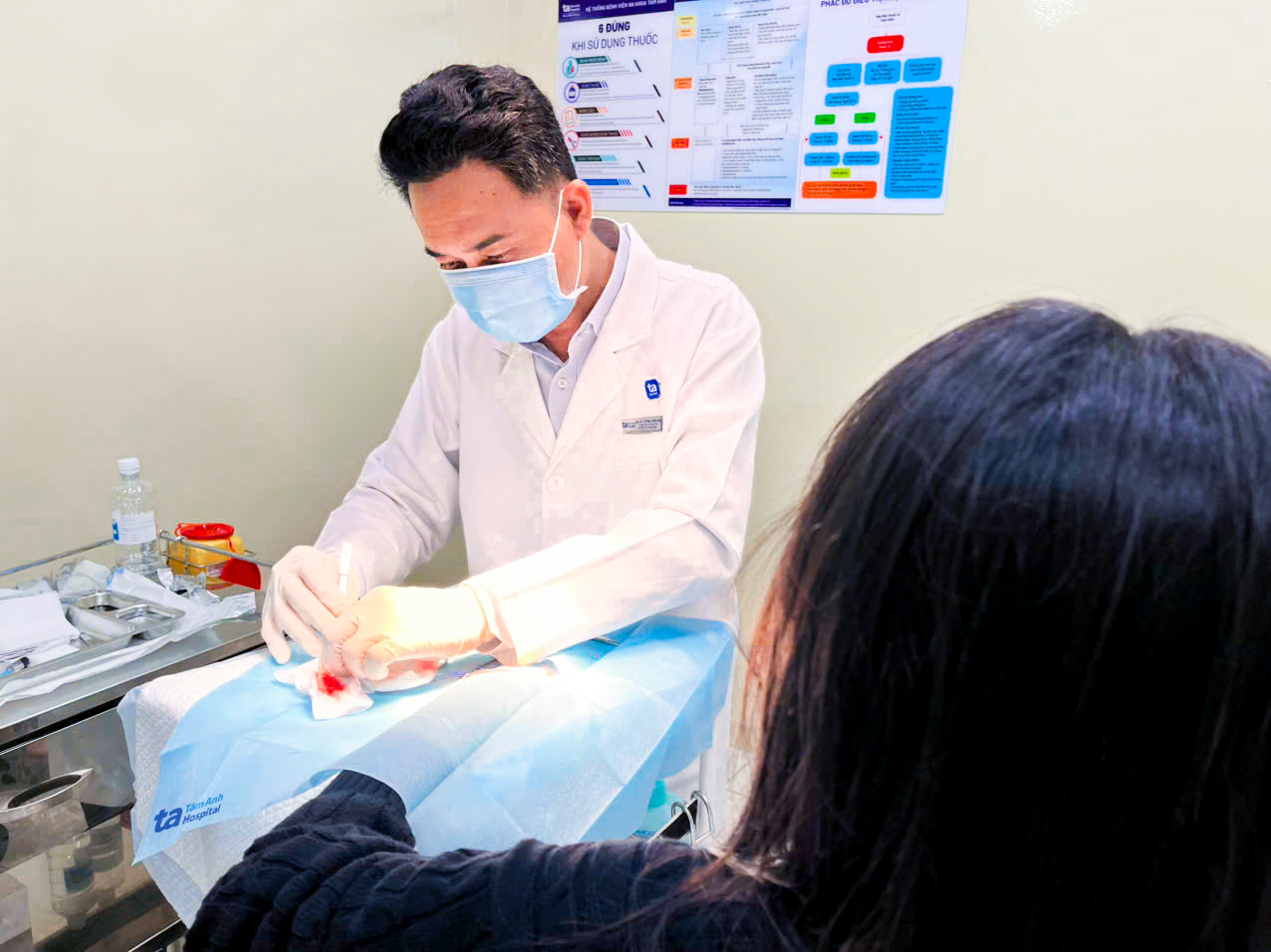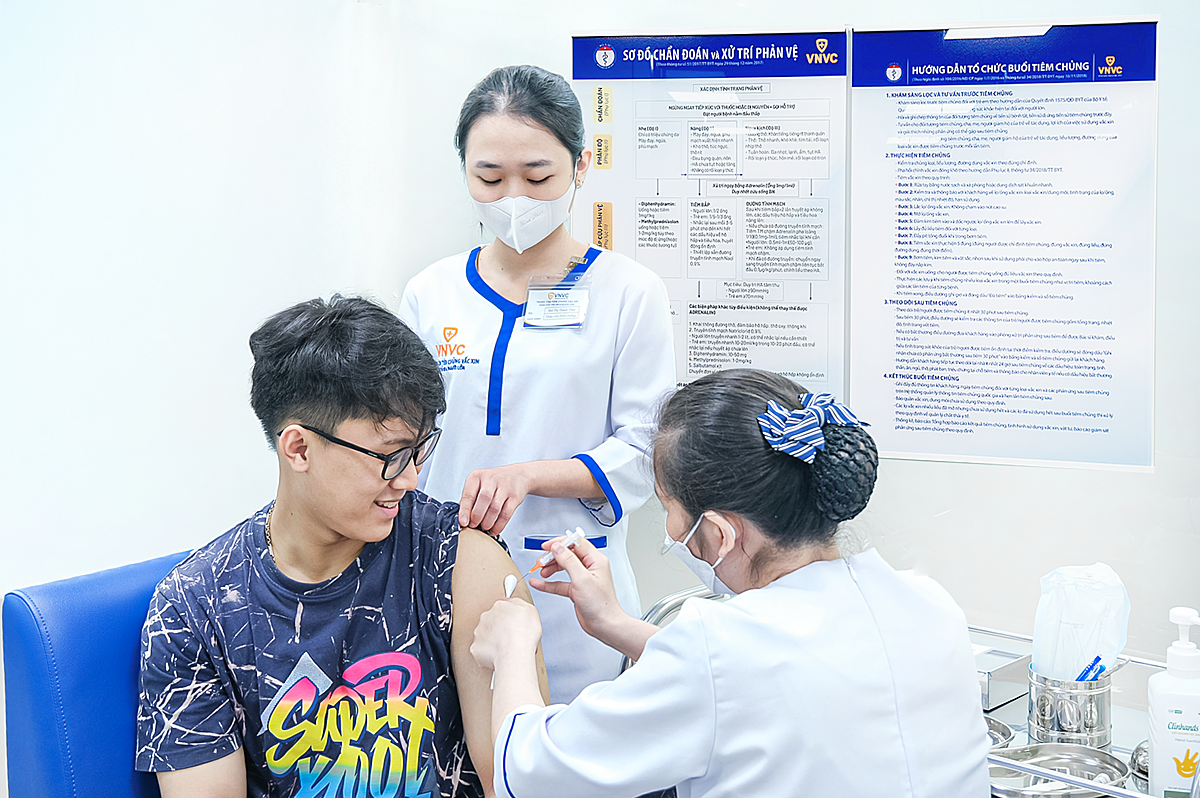The Phu Quoc Ridgeback, a breed of dog native to Vietnam, had been a family pet for five years. Thao was unsure why the dog, typically friendly, suddenly became aggressive.
Dr. Hong Van In, head of the emergency unit at Tam Anh General Clinic in District 7, described Thao's injuries. She suffered several V-shaped and arc-shaped lacerations on her left hand, including a 2x3cm wound exposing muscle tendons. Her lip and the webbing between her fingers also had several 1-4cm lacerations. While the bleeding was minimal, the soft tissue damage was significant.
 |
Dr. Hong Van In treats Thao's wounds. Photo: *Tam Anh General Hospital* |
Dr. In treated Thao's wounds, stitching her hand 15 times and her lip three times. She received rabies and tetanus vaccines, medication, and wound care instructions. A follow-up appointment was scheduled for the following week.
Dr. In emphasized that even well-cared-for pets can become aggressive when provoked. He advised against excessive physical contact like hugging and kissing, teasing pets, or allowing young children to get too close. He also recommended muzzling dogs or using leashes in public spaces.
Dr. Bach Thi Chinh, medical director of the VNVC vaccination system, explained that rabies is present in the saliva of warm-blooded mammals like dogs and cats. The virus is transmitted to humans through bites, scratches, or licks on open wounds. The average incubation period for rabies is two to eight weeks, but it can be shorter or even last over a year. Bites closer to the central nervous system, such as the head, face, and neck, result in faster disease onset. Once rabies symptoms appear, the mortality rate is almost 100%.
 |
People receiving rabies vaccinations at VNVC. Photo: *Moc Thao* |
Anyone bitten or scratched by an animal should immediately wash the wound with soap and running water for 15 minutes to remove as much of the virus as possible. Then, disinfect the wound with iodine or 45-70% alcohol and seek immediate medical attention for rabies vaccination.
Vietnam currently uses two new-generation rabies vaccines: Verorab (France) and Abhayrab (India). These vaccines are nerve tissue-free and don't affect health or memory. The intramuscular vaccination schedule is five doses on days 0, 3, 7, 14, and 28. The intradermal schedule is eight doses on days 0, 3, 7, and 28. Depending on the severity of the wound and vaccination history, doctors may also administer rabies immunoglobulin, tetanus vaccine, and tetanus immunoglobulin.
Individuals at high risk of rabies exposure can receive pre-exposure prophylaxis with three doses on days 0, 7, and 21 (or 28). If subsequently bitten or scratched, they only need two additional doses and no rabies immunoglobulin, even for severe wounds.
Nhat Thanh
*The patient's name has been changed.












